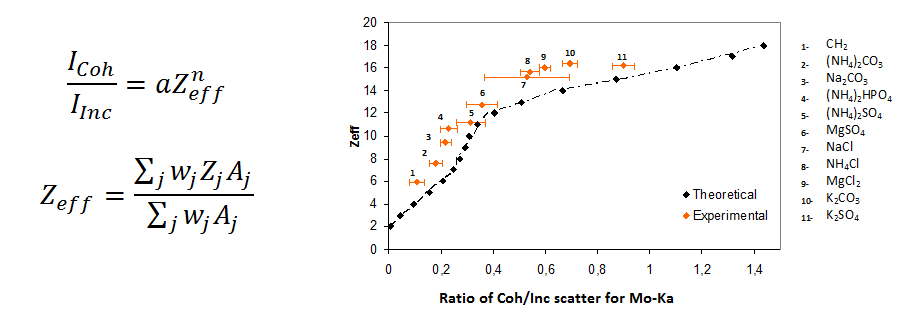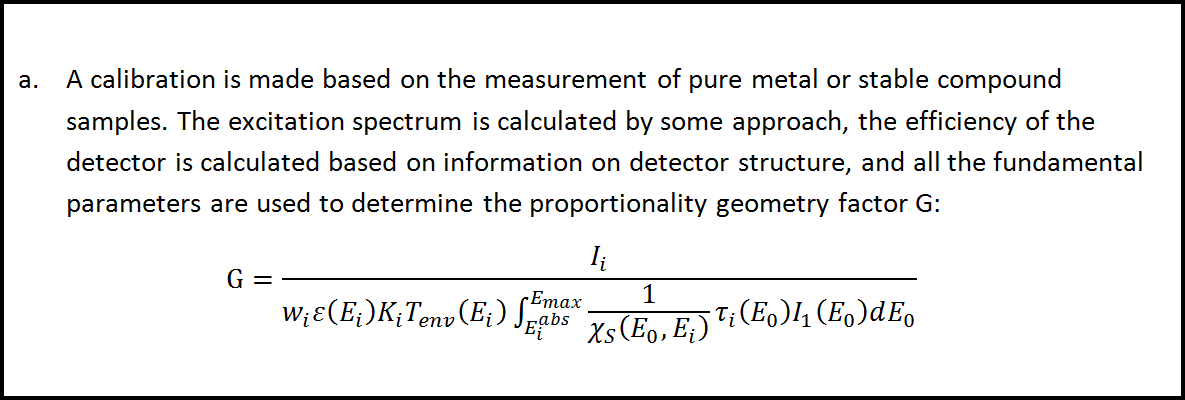6.3.5 Fundamental parameters
The intensity of scatter peaks can be used for more complex interpretation. Theory and experiment show that the coherent/incoherent scatter ratio is proportional to the average atomic number of the sample, and an experimental calibration can always be made to determine the sample effective atomic number within certain intervals of atomic numbers.

In 1977 Nielson proposed a fundamental parameter based method that uses the intensities of coherent and incoherent radiation and the total scatter cross sections to estimate the presence of two invisible elements (dark matrix) in the sample, which are further used to complement the detected elements in defining the sample matrix for the calculation of the sample attenuation correction. The algorithm of the method is based on the following steps:

Two fundamental parameter based programs are included in the IAEA QXAS software: "Full Fundamental Parameters", based on the use of total scatter cross sections and with multiple options for excitation modes and strategies to perform the scatter corrections depending on the sample nature and; "Backscatter Fundamental Parameters", implemented for monochromatic excitation and based on the use of differential scatter cross sections.
References:
Nielson, K.K. Matrix correction for energy dispersive X-ray fluorescence analysis of environmental samples with coherent/incoherent scattered X-rays, Analytical Chemistry 49 (1977) 641.
He F, Van Espen P. An integrated system for quantitative EDXRF analysis based on fundamental parameters, Nucl. Instrum. Methods. A 299 (1990) 580.
Węgrzynek, D.; Markowicz, A.; Chinea-Cano, E. Application of the backscatter fundamental parameter method for in situ element determination using a portable energy-dispersive X-ray fluorescence spectrometer, X-Ray Spectrometry, 32 (2003) 119.